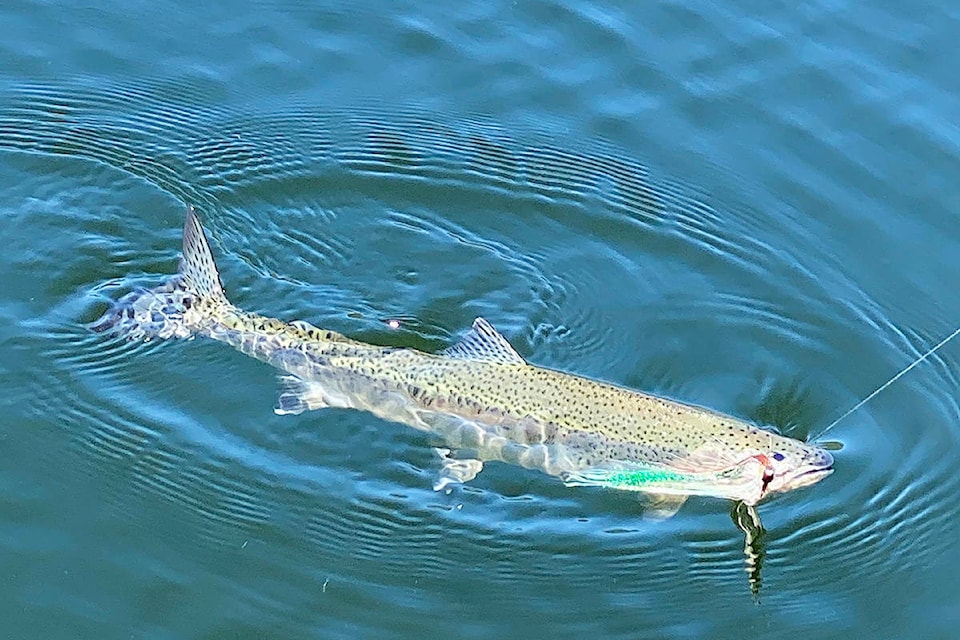A year before the Mount Polley Mine breach in August 2014, the Ministry of Forests, Lands, Natural Resources and Rural Develpment (FLNRRD) began monitoring the survival of adult trout in Quesnel Lake using acoustic telemetry.
Since then no change in survival of adult trout in the lake has been detected and FLNRRD will continue to monitor survival on an annual basis, a spokesperson for the Ministry of Environment told the Tribune in an e-mailed response.
So far 95 adult trout were implanted with acoustic tags in 2019 and another 95 will be tagged in 2020.
Each, individually tagged fish can be tracked for three years.
Under the Environmental Management Act Permit, the ministry of environment said it requires Mount Polley Mine Corporation (MPMC) to collect all mine site runoff and treat the effluent to meet BC Water Quality Guidelines at the edge of the initial dilution zone in Quesnel Lake where it is released through the diffuser pipe.
Monitoring results from MPMC show copper concentrations in Quesnel Lake West Basin sediment remain above concentrations at reference sites, since the breach, and that concentrations in lake trout ovaries and manganese concentrations in pikeminnow whole body tissue are higher in Quesnel West Arm than at reference sites.
“In Quesnel Lake, average fish muscle tissue concentrations of bioaccumulating metals are not exceeding B.C. guidelines for high consumption of the fish,” the spokeperson noted.
Under its environmental management act permit, the mine is required to conduct comprehensive monitoring of Quesnel Lake and other lakes and creeks in the vicinity to determine potential impacts to water quality, sediment quality, biota - including fish - and human users, the ministry spokesperson confirmed.
Monitoring requirements are summarized in the mine’s comprehensive environmental monitoring plan and include water quality, sediment quality, invertebrate and algal monitoring, available copper concentrations at depths as well as fish tissue sampling in the west arm of Quesnel Lake in order to assess the effects related to the breach as well as the ongoing discharge to Quesnel Lake.
In response to concerns about algae blooms in Quesnel Lake raised by Likely residents in the fall of 2019, the MOE is monitoring nutrients in the Western Basin of the West Arm.
“The ministry will be able to discuss the currently collected water quality results and any comparisons to previous years’ data later in 2020 once the collection and analysis is completed,” a spokesperson noted.
Do you have a comment about this story? email:
editor@quesnelobserver.com
Like us on Facebook and follow us on Twitter.
